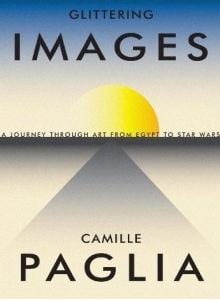Lesbian art critic Camille Paglia provoked controversy in the 1990s by attacking “gay Stalinists” – queer folks with inflexible ideology – who she saw turning the gay liberation movement into a radical, ineffectual faction.
Despite this, a love for all queer culture is on clear display in her new book, Glittering Images, a survey of some of the greatest works of Western art. Paglia recently spoke about it to a packed audience at the Art Gallery of Ontario in Toronto.
Glittering Images celebrates the gay community for keeping the art deco style alive. In one chapter Paglia argues that gay 1960s icon Andy Warhol is the true genius of modern art. In another, Walter Pater and Oscar Wilde – the 19th-century art critics who helped create modern gay-male style – are feted as visionaries.
Paglia’s aim is to challenge social conservatives to rethink their puritanical rejection of sensual pleasure and the arts. It also fixes on progressives, challenging them to reconsider the rejection of religion that is so often a part of leftism.
Paglia is an atheist. In her view, agnostic and atheist queers have a duty to appreciate the artistic and philosophical riches that exist in all faiths, including the homophobic religions. To do less is a disservice not only to radicalism, but also to the movement for art appreciation that is Paglia’s own crusade. She thinks that meditation on art can replace religion as the answer to spiritual hunger.
Paglia has not given up criticizing “the gay Stalinists.”
“Gay culture today is becoming totally marginal and irrelevant,” she says. “Gay youth have been done a terrible disservice by the movement, which doesn’t teach them about their great heritage of art and style.”
She cites the modern transgender rights movement as an example of reactionary queer thinking.
“I identify strongly with drag queens and transsexuals, particularly as they were in the ’60s. They were fierce and powerful. They were street warriors,” she says. “Some might have had bits and pieces of [sex-change] surgery. But the focus now is on ‘transgender,’ which has gotten rigidly ideological.”
Paglia recalls speaking at a gender issues debate at Yale University earlier this year. Many members of Yale’s transgender student group attended. They struck her as uninterested in the history of gender expression in art and culture and “fixated on angry slogans.”
“The movement has denied them a true education. It pains me, because I’ve struggled with gender identity my entire life.” (Paglia has written that she might have been a female-to-male transsexual had the option existed in her 1950s youth but that she is now comfortable with her “permanently ambiguous sexual identity.”)
“My point is that the transgender movement’s focus on manipulating the physical, through surgery, is too often a way of avoiding introspection. We have an obligation as human beings to engage in self-examination – to seek self-understanding, apart from the social and the physical.
“Youth are falling into a trap of thinking that sex change will solve their deeper problems – their spiritual problems. But it can’t.”
Paglia’s point is not that all trans people are delusional or misled. She cites Holly Woodlawn, the trans woman who was one of Andy Warhol’s muses, as an example of a great transsexual and artist. Rather, she fears that some of the trans youth she sees are doing themselves a disservice by focusing on the physical and hormonal, rather than on the spiritual, the artistic and the inner.
“It’s a pill-based psychology, in search of easy solutions,” she says. “It’s shallow.”
According to Paglia, what today’s queer youth need is the kind of introspection that only contemplation of art can bring.
“It’s sometimes said I’m just a baby boomer who can’t appreciate anything new — that I’m stuck on this false idea that only the pop culture of the 1960s and ’70s had any value,” Paglia says. “But I’m sorry, pop culture has declined!”
She compares Lady Gaga to David Bowie by way of explanation.
“Lady Gaga is a fraud. She’s surrounded by all of these gay men who are advising her, telling her what to wear, what to say, but everything about her is derivative. Everything is stolen from another artist.”
Bowie, by contrast, stands for Paglia as a great queer artist. She recently completed a major essay on Bowie and gender, commissioned by the Victoria and Albert Museum for its catalogue about an upcoming exhibition of Bowie’s costumes.
“His music was revolutionary and genius. And Bowie was certainly bisexual in the Ziggy Stardust period. His music had amazing frank sexual energy. When we look at Bowie, we see true art. But Gaga is just a fake.”


 Why you can trust Xtra
Why you can trust Xtra


